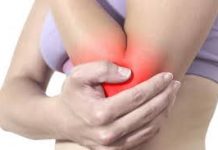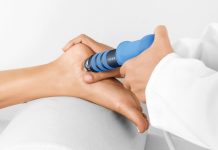SEPTIC ARTHRITIS
DEFINITION
There is no microorganisms (bacterias, viruses, etc.) on the joints, the environment is sterile. Septic arthritis is the condition that the bacteria called microorganisms reach to the joint and cause diseases.
WHAT IS THE CAUSE?
The disease starts when the baceria reachs to the joint. Infection factors reach to the joints mainly though blood. In other words, the bacteria mixing with the blood in another part of the body reach to the joint through the circulation. The bacteria’s mixing with the blood is called bacteremia and reaching to the joint through the blood is called hematogenous. Apart from the hematogenous, septic arthritis may less frequently occur upon a direct intervention to the joint. An intra articularly made injection or a surgical intervention (i.e. arthroscopy) for the joint may cause to the infection.the bactera’s reaching to the joint in this way is called direct inoculation. Another rare spread way is the bacteria’s reaching to the joint from the adjacent bone.
Hematogenous septic arthritis is mostly observed during childhood (figure 1). The septic arthritis spread through the direct inoculation (after medical intervention) is naturally observed with the adults.
Left hip joint septic arthritis. The increase in the joit distance is one of the early radiological findings.
Why does the bacteria mix with the blood circulation? This condition may be observed in our bodies at any time. For example, some bateria may mix with the blodd after we brush our teeth. What is important here is the defense mechanism of our bodies. The bacteria mixing with the blood is eliminated by the erythrocyte and antibodies. In the babies and children whose defense and immune mechanism has not been fully developed yet, the bacteria can pass these defnense mechanism and reach the joint. In the adults, the existing immune system is supressed. The conditions like corticosteroid treatment, rheumatoid arthritis, lupus and diabetes may cause to the supression of the immune system (figure 2).
Figure 2. The Archive of Hakan Gündeş
Septic arthritis based on diabetes and gout. There are unexpected radio-opaque images on the joint distance.
Once the bacteria reaches the joint, it starts to reproduce. Thus, it needs the amino acid. In order to acquire this, it secretes proteolytic enzymes. The substantial agent of the cartilage constituting the joint is a kind of protein, the collagen. The joint and accordingly the collagen are effected from these enzymes and cartilage is damaged. Cartilage is not a self-renewing (self-repairing) tissue. So, in onrder to minise the level of the damage, the arly diagnosis and the treatment of the septic arthritis is of vital importance.
HOW TO DIAGNOSE?
Differently from the other joint problems, septic arthrisits is observed on one joint in the children. In 10-20% of the cases, multiple (more than one) joint involvement is seen. Multiple joint involvement is generally not symmetrical and involves approximately four joints. Corticosteroid treatment, rheumatoid arthritisand diabetes are the main risk factors for the multiple joint involvement.
Pain on the joint is the manin finding. Since the pain increases with the movement, each patient has limitation of movement at different levels. If the joint is superficial (i.e. knee joint), swelling and temperature ,ncrease can be observed. Rushes and color change may not be observed in each patient. Moreover, fever, weakness, loss of appetite, nausea are the other general findings. The most commonly involved joints in the adults are the knee and hip joints; but theoratically, septic arthritis may be see on each joint.
In case of septic arthritis suspect, blood sample is drawn from the patient to make some tests. Increase in the amount of leucocyte and high levels of CRP (C reactive protein) and ESR (erythrocyte sedimentation rate) are seen in almost every cases. These laboratory findings are not specific. In other words, they can be detected in many other cases apart from the septic arthritis. However, high levels of these tests in the patients with septic arthritis suspect is highly important in establihing the diagnosis. From each patient with septic arthritis suspect, some joint liquid is taken from the joint with an injector. This is called arthrocentesis. The liquid is died with special stain and the bacteria existence is examined under microscope. This is galled gram stain. Some amount of the same liquid is cultivated into a special feedlot and bacteria is expected to develop. This is called joint cultured. Gram stain test is quckly resulted. The positive result of the test has great contribution to the diagnosis; however negative result does not eliminate the septic arthritis diagnosis. Joint culture is resulted within 24 to 48 hours. Final diagnosis is establihed in accordance with the culture results.
Radiological examination methods are helpful in the differential diagnosis. Direct x-ray should always be performed. No finding is detected in the early period (within the first 7-10 days). The aim in requiring direct x-ray is to observe whether there is any spread to the adjacent bone (osteomyelitis) (figure 3).
Figure 3. The Archive of Hakan Gündeş
Hip joint septic arthritis. Spread to the adjacent bone (femur) in the patient consulting 15 days after the first findings.
In this case, the treatment method can be changed. In case the patiet applies late or the diagnose is not established, the direct x-rays taken on the 10th or 12th day may display destruction on the joint or errosion on the joint surface. Even the ultrasonography, computerised tomography and magnetic resonance (MR) are more sensitive imaging methods, they are rarely needed. Ultrasonography shows the amount of the joint liquid, computerised tomography shows whether bone infection (osteomyelitis) is developed and magnetic resonance shows the edema out of the joint and in this way they are helpful in the diagnosis of the infection and the abcess.
Nucleer medicine examinations, especially three phase bone scintigraphy is very helpful in the detection of the osteomyelitis existence. In the Gallium-67 or indium-11 scintigraphies, there is involvement increase in the bone within the infection area. In the patients suspected fort he tubercclusis arthritis, in addition to the clinical microbiological examination,tuberculin test and synovial tissue biopsy should be performed and chest x-ray should be taken (figure 4).
Tuberculosis septic arthritis of the wrist joint. In riziform.
WHAT IS THE TREATMENT?
Septic arthritis and its treatment (especially in the children) is under the urgent orthopedics diseases group. In case of swelling, rushes, temperature increase, sensitivity and limitation of movement in the joint, septic arthrisi treatment should be started unless otherwise proved. In the suspect of septic arthritis, upon taking the joint liquid and examining it with gram stain, the appropriate antibiotic treatment is started in accordance with the age and risk factors of the patient. This treatment is generally performed with hospitalization and intravenously. Even controversially, only antibiotic treatment is not deemed sufficient. In accordance with the joint involved, especially in the babies and the children, the abcess within the joint should be surgically discharged in order to prevent the possible joint injury. This intervention will minimise the permanent joint damage by removing the proteolitic enzymes, bacterias and infarcts (figure 5).












